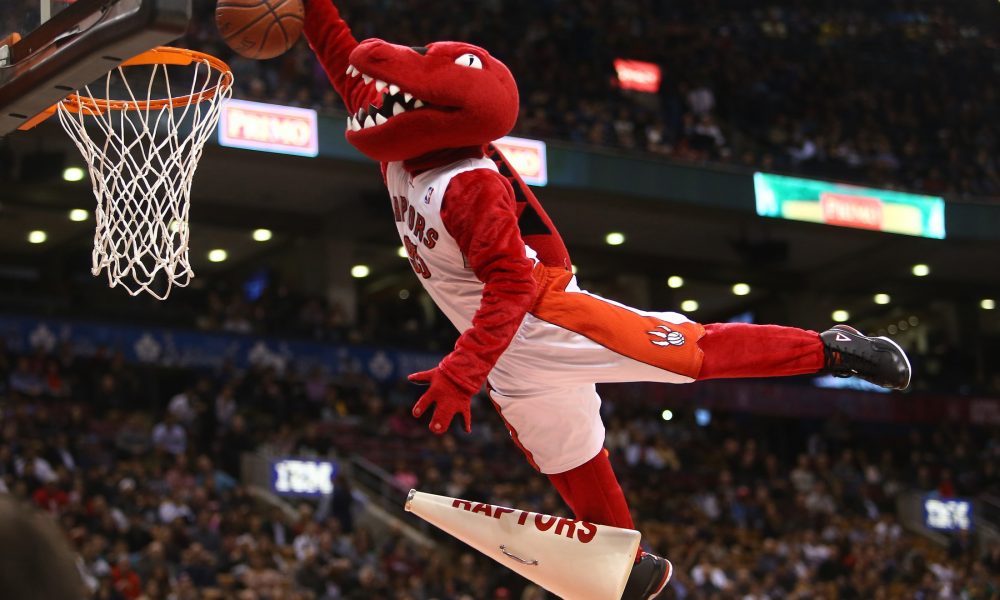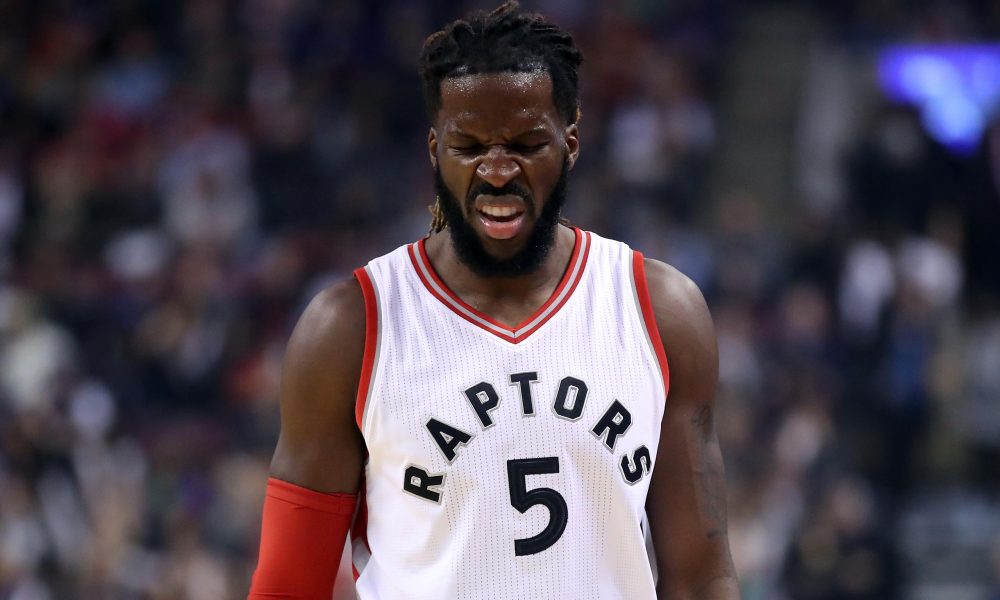The Raptors lost a tough game against what many perceive to be an inferior team. It can quickly be chalked up to unsustainably poor shooting and missing their franchise centre who might’ve been able to help against a key matchup by taking on Demarcus Cousins. Those things are important, but there were many smaller, yet still significant, things that defined this game. Not all of which were negative or lead to the loss, but there were a fair bit of interesting moments that took place.
Here are my miscellaneous tactical observations from the game:
Baseline Double
When the opposition has a talent which the Raptors perceive as a threat in the post, Toronto traditionally likes to ¾ front the post player while simultaneously sending help from the weakside along the baseline. They then proceed to play a weakside zone to cover up for the 2 defenders that are now attached to the ball in the low post.
I am sure I missed a couple of instances of this happening, but here are a majority of the examples in which the Raptors did as I described above to varying degrees of success. (Note: I suggest watching this in its entirety as the successful possessions and the failures are not evenly distributed throughout the duration of the clip.)
It’s tough to glean a lot from this, as there aren’t numerous teams that have such a talent that does damage in the low block. One of the most important players that fits this description is LeBron James, who the Raptors treat in the same manner when he posts up. The difference is that a wing player is tasked with ¾ fronting James while a big man is usually tasked with coming across the baseline to provide help. Many of the examples against Sacramento were the opposite, and as a result, the Raptors had to recover and rotate to larger distances. Also of note, Cousins is taller than the player which provided help on the baseline, allowing for easy sight lines to make the correct pass. Not to suggest that LeBron James would routinely make the wrong pass just because a 7 footer was in his immediate vicinity, but it is still notable.
Regardless, Cousins is an incredible talent and basketball mind and this is just another game in which he displayed that. Incredibly dominant, regardless of inferior matchups.
Lowry’s Deception as a Screener
The Raptors will occasionally leverage Lowry’s stature as a screener, since he can make meaningful contact to provide an advantage to the ball handler, while also putting a smaller guard in a precarious position in which they are not comfortable.
Against Sacramento, the Raptors used Lowry as a screener but he was able to deceptively slip and fade away from his defender a couple times for good looks.
Here, the Raptors run a simple 2/1 pick and roll in semi-transition and Lowry catches Lawson sleeping and fades to the corner for an easy triple.
In this play, the Raptors were set up to run one of their patented crunch-time pet plays, Ram Stagger. Usually DeRozan, the ball handler, will use both Lowry and Poeltl’s screen, catching his primary and secondary defender on screens, allowing him a lane to the hoop.
Here, Lowry calls an audible (or not, maybe it was designed like this. I can’t remember a time in which they have run this variation of the play) where he slips the initial screen and is able to create enough space to turn the corner and get a shot at the rim. He didn’t convert, but it’s interesting to note where new wrinkles of old favourites pop up.
Chin Pick and Roll Corner Variation
The Raptors unveiled another new variation to an old favourite, Chin Pick and Roll.
In this play, Lowry would usually exit to the opposite side of the court to space out the defense while DeRozan engages in a high pick and roll. What is different here is that Lowry exits to the strong side of the floor.
The first example has Lowry run a secondary pick and roll from the corner and leads to an easy lob, as the tertiary defender tasked with tagging Bebe is in the opposite corner.
The second example has Lowry set a pseudo-flare screen for Patrick Patterson. If Patterson had been very courageous, or was a step in, he could’ve popped that for a three while his defender was caught behind Lowry. This is another instance where the Raptors leverage Lowry’s physique as a screener.
Poeltl the Passer
This one is much simpler, but Jakob Poeltl made a very accurate and advanced pass in a 4-on-3 situation in which a lot of attention was paid to Lowry after a high ball screen.
The Raptors usually have a lot of difficulty in the playoffs because their screeners cannot make plays in space while their primary ball handlers face tons of pressure and defensive attention. Bebe has also flashed the ability to make this pass. Valanciunas has faced this situation in the past but makes this successful pass much less frequently. Glean from this what you will.
BLOB Flex Variation
The Raptors like to use their Flex set when they inbound the ball from the baseline.
Against Sacramento, they implemented two nice wrinkles. First, where DeRozan would traditionally come off a weakside pindown screen, he received a flare screen from fellow wing, Demarre Carroll. The other wrinkle was less of a wrinkle and more of a correct read by Powell to slip the screen after he freed Patterson for what would be the usual entry point in the set.
Conclusion
Those were all my thoughts from a slightly depressing game. It was interesting tactically and hopefully the Raptors can bounce back. They are shooting uncharacteristically bad right now, logic points to them breaking out of that funk at some point.



